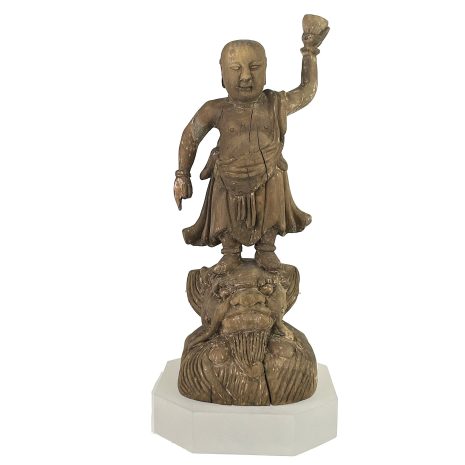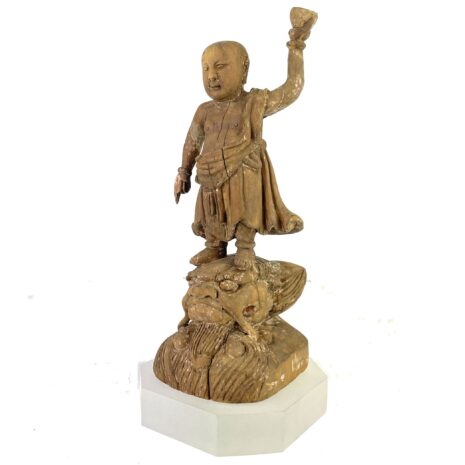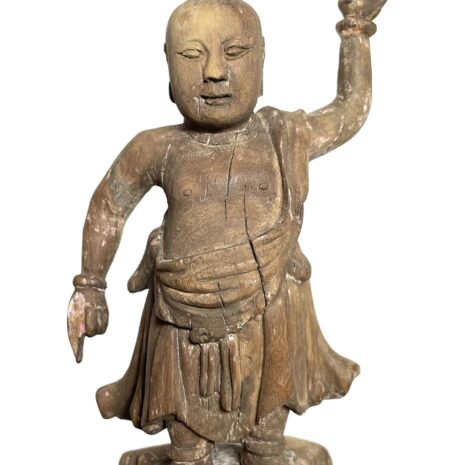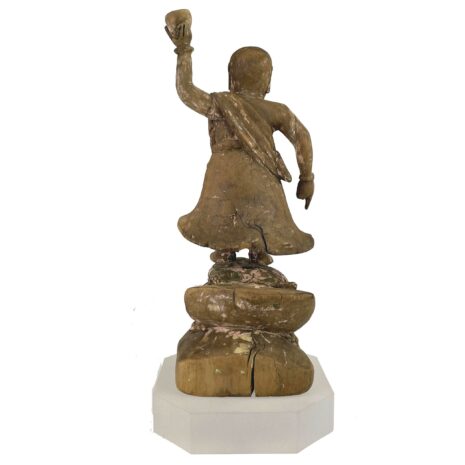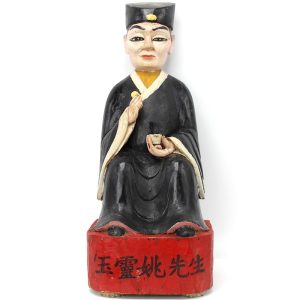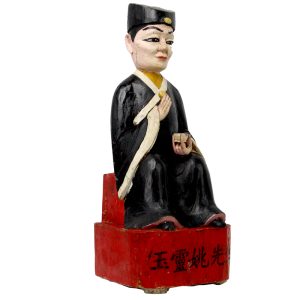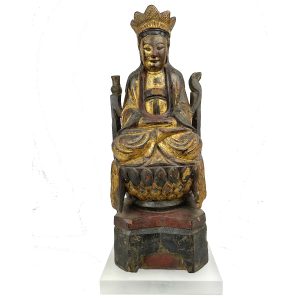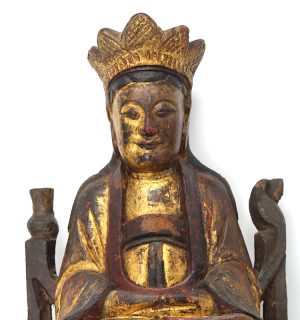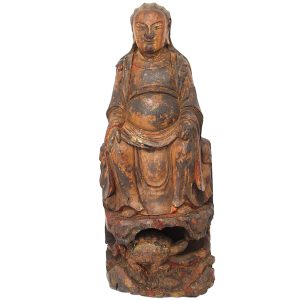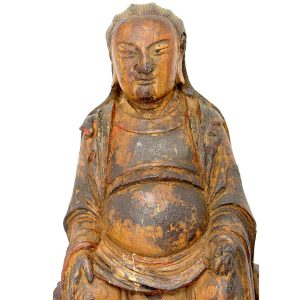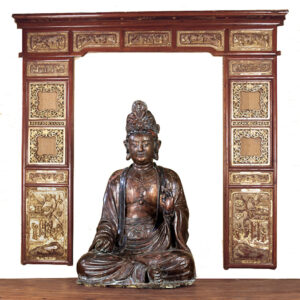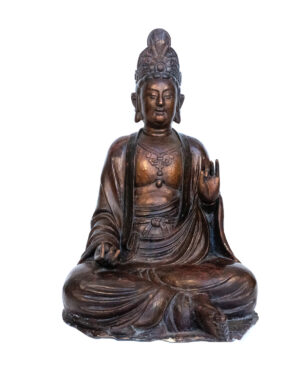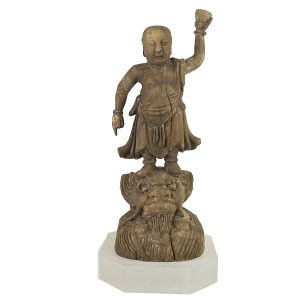Antique Buddha as an Infant on a Lion, China (19405DRK) $850
$850.00
H: 9″ W: 3.625″ D: 3.5″ | FREE UPS SHIPPING!
This rare carving of the infant Buddha with well defined features is clearly a provincial rendering that uniquely departs from traditional renderings. He holds a monk’s begging bowl as he points to the heavens and he stands on a lion’s head, as he is the lion of the Shakya clan. Given its small size, it was probably displayed on a home altar.
Description
Shakyamuni Buddha was born Prince Siddhartha Gautama in 560 BCE in Lumbini Park in the Himalayan foothills, son of king Śuddhodana Gautama of the Shakya clan and Queen Maya. Buddhist scriptures state his conception and birth were miraculous and that he was born fully formed. This rural statue portrays him fully developed standing on infant legs firmly planted on the ground, one hand pointing to the heavens, the other down to earth symbolizing his supremacy over all aspects of the universe. Although an infant, his facial features reflect the adult Buddha with pendulous ears and with a wisp of hair to represent his infancy and associate him with youthful monks. Created by a provincial artisan, the iconography departs from traditional Buddhist statues. While normally his left hand points to the heavens, here he holds a monk’s bowl reflecting the Buddhist tradition of feeding monks by placing food in a begging bowl. Rather than standing on a plain or lotus base, he stands on a lions head, symbolizing that Shakyamuni is the lion of the Shakya clan. This iconography probably stems from depictions of two bodhisattvas (Manjushri and Guanyin) who are shown on the backs of a one of Buddhism’s mythical animals, a recumbent Buddhist lion that is associated with simhanada meaning “the Lion’s Roar” which is a Buddhist description of the intensity experienced at the moment of enlightenment. As king of all beasts the lion’s roar is heard over long distances which reflects the wide and rapid spread of Buddhist ideas, the scriptural proclamation that he made immediately after his birth, and that he had no equal. Although wood carvings of the infant Buddha are very rare because they were infrequently displayed in home settings, this small image may have been placed on a home altar. Most of the original white base and polychrome was removed but remnants show the original red and black pigments and lacquer. It is in very good condition considering its age and use and has expected cracks and chips found and a loss on the right hand. It is mounted on a frosted acrylic stand to add stability and enhance its remarkable presence.
Sources:
The Metropolitan Museum of Art, Bodhisattva Avalokitesvara of the Lion’s Roar, or Simhanada Avalokiteshvara (Shi Hou Guanyin)
Roots.gov, Shi Hou Guanyin
Additional information
| Dimensions | 12 × 9 × 9 in |
|---|---|
| Place of Origin | China |
| Period | Antique, Qing Dynasty |
| Date | 18th-19th Century |
| Materials and Technique | Wood |
| Dimensions (inches) | Ht: 9” W: 3.625” D: 3.5” |
| Dimensions (metric) | : Ht: 22.22cm W: 9.21cm D: 8.89cm |
| Weight | 9.3 oz |
| Condition | Very good, see description |
| Shipping Box Size | |
| Item Number | 19405DRK |
